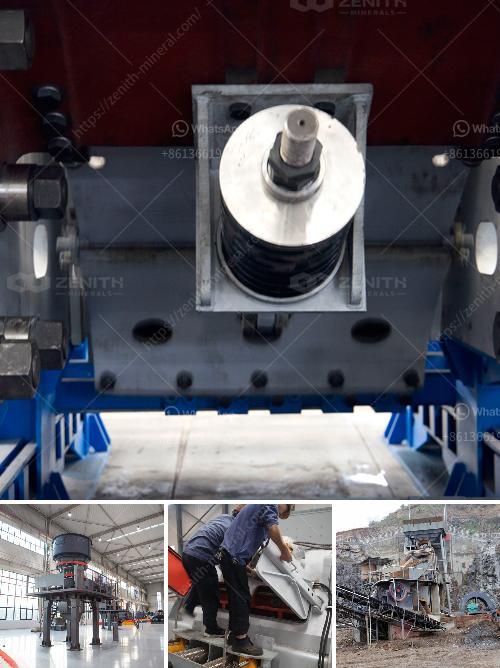Reducing vibration in a jaw crusher is essential to enhance its operational efficiency and longevity. Here are some effective strategies:
Proper Foundation: Ensure that the crusher is mounted on a solid, vibration-dampening foundation. Use vibration isolators or springs beneath the crusher's base.
Balance the Components: Ensure all moving parts, such as the flywheel, are properly balanced. Uneven weight distribution can cause excessive vibration.
Use High-Quality Bearings: Bearings should be in good condition and adequately lubricated. Worn-out or improperly lubricated bearings can increase vibration.
Regular Maintenance: Perform regular inspections and maintenance. Loose bolts, worn-out parts, and unbalanced components can contribute significantly to vibration.
Feed Control: Ensure consistent feed into the jaw crusher. Jammed or oversized material can cause sudden impact and increased vibration.
Structural Reinforcement: Strengthen the structural components surrounding the crusher to minimize resonance and vibration transmission.
Install Rubber Pads or Mounts: Rubber pads or mounts can absorb and dampen some of the vibrations before they transfer to other parts of the machinery.
Avoid Overloading: Always operate the crusher within its intended capacity. Overloading can cause excessive vibration and potential damage.
Implement Shock Absorbers: Installing shock absorbers can help mitigate vibrational forces during operation.
Monitor and Analyze Vibration Levels: Use vibration monitoring equipment to detect and analyze unusual vibration patterns early and address them promptly.
By implementing these measures, you can effectively reduce the vibration in a jaw crusher, leading to improved performance and reduced wear and tear on the equipment.
